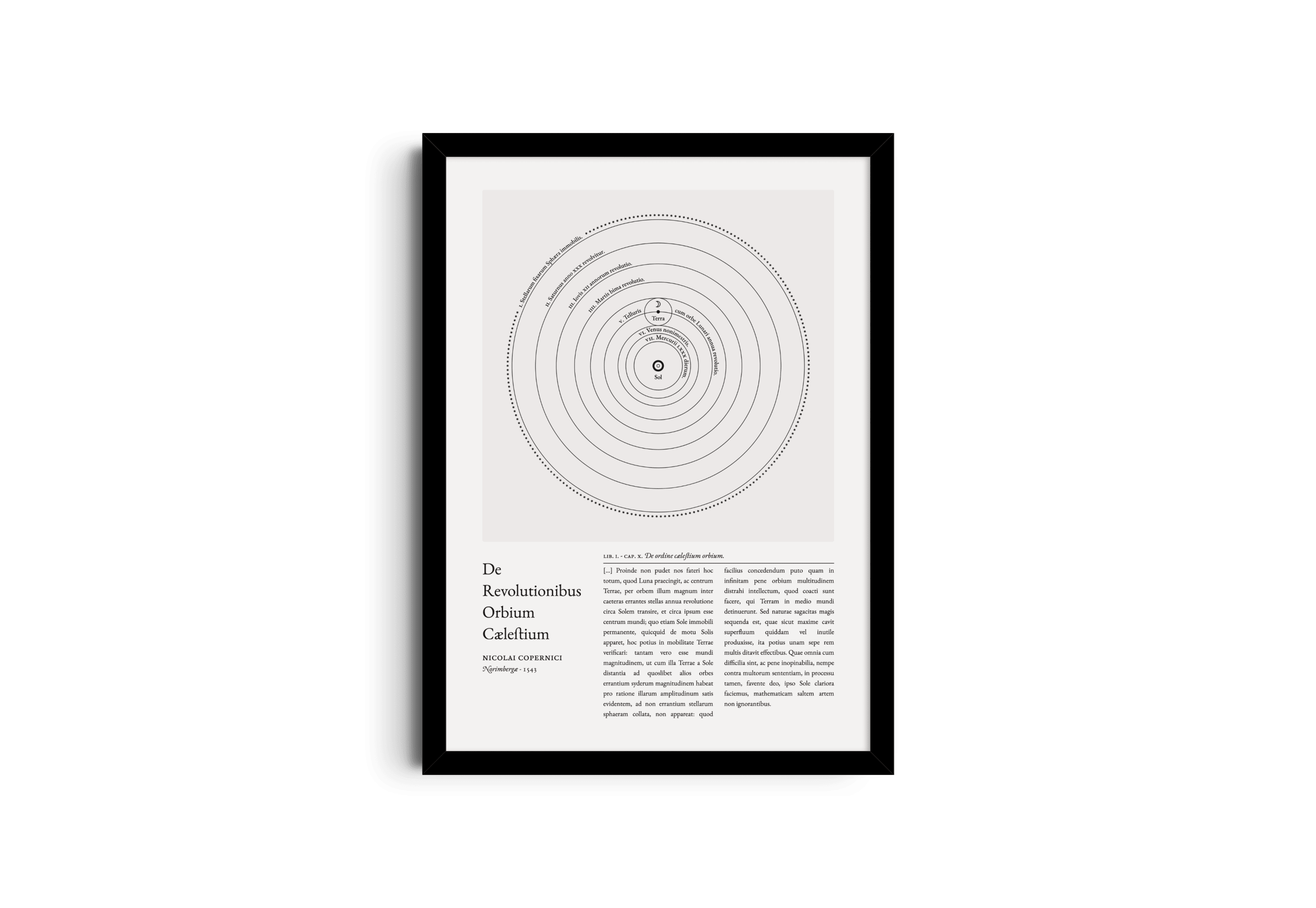De Revolutionibus
The year 1543, when De revolutionibus orbium coelestium was published and when its brilliant author, Nicolaus Copernicus, died, marks an important date in the history of humanity. After Copernicus, and only after Copernicus, man is no longer at the center of the world. The universe no longer revolves around him.
The text above has been adapted with the introduction by Alexandre Koiré for the edition of the Academy of Sciences in Toruń in 1873, of which Koiré followed the initial drafting.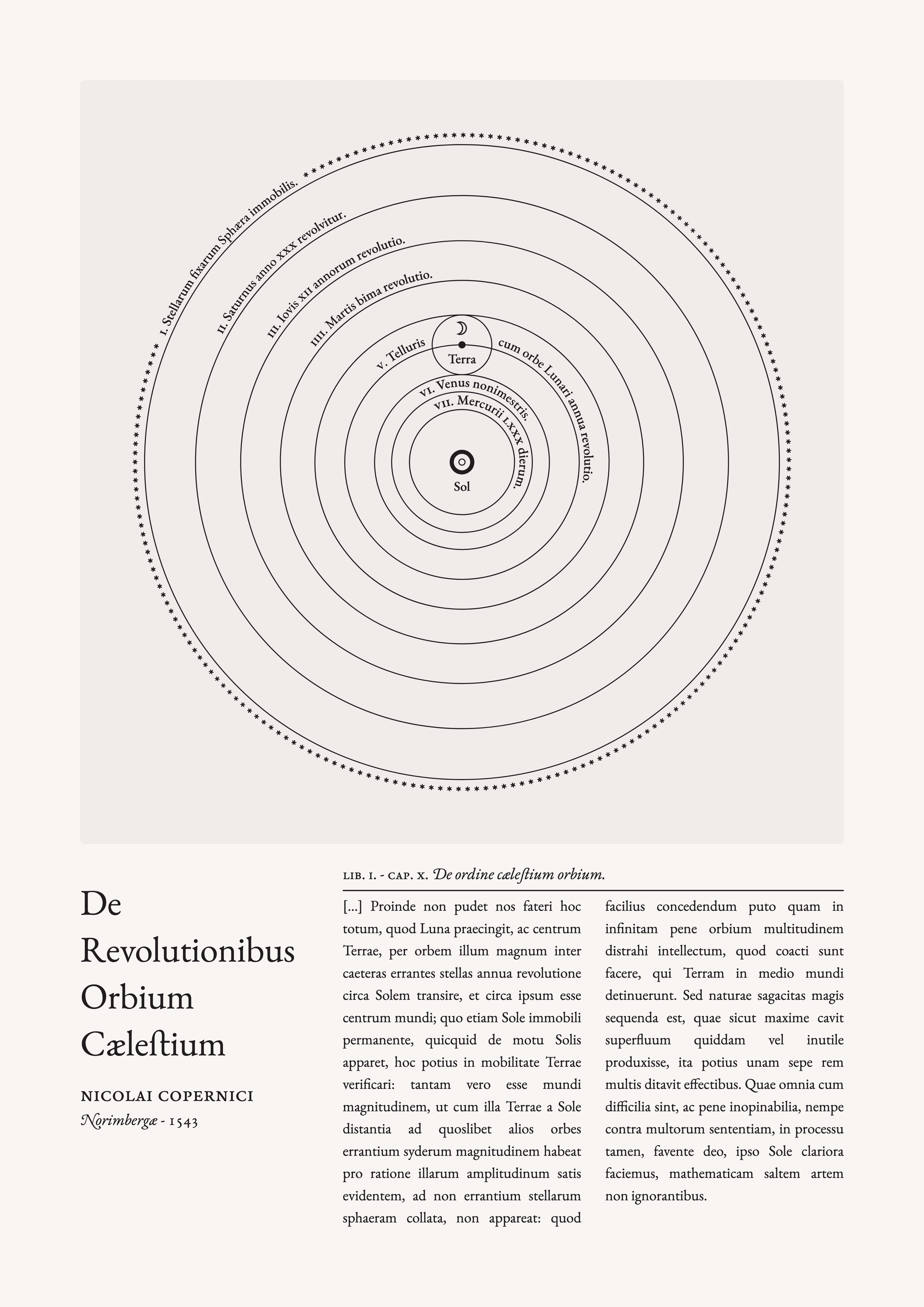
Artistic reproduction of a handmade drawing executed by Nicolaus Copernicus to illustrate the heliocentric model.
Translation
[…] Therefore we are not ashamed to maintain that this totality — which the moon embraces — and the centre of the Earth too traverse that great orbital circle among the other wandering stars in an annual revolution around the sun; and that the centre of the world is around the sun. I also say that the sun remains forever immobile and that whatever apparent movement belongs to it can be verified of the mobility of the Earth; that the magnitude of the world is such that, although the distance from the sun to the Earth in relation to whatsoever planetary sphere you please possesses magnitude which is sufficiently manifest in proportion to these dimensions, this distance, as compared with the sphere of the fixed stars, is imperceptible. I find it much more easy to grant that than to unhinge the understanding by an almost infinite multitude pf spheres — as those who keep the earth at the centre of the world are forced to do. But we should rather follow the wisdom of nature, which, as it takes very great care not to have produced anything superfluous or useless, often prefers to endow one thing with many effects. And though all these things are difficult, almost inconceivable, and quite contrary to the opinion of the multitude, nevertheless in what follows we will with God's help make them clearer than day — at least for those who are not ignorant of the art of mathematics.
Copernicus's heliocentric model
Nicolaus Copernicus developed the heliocentric idea as a result of his observations and mathematical calculations. In the early 16th century, the prevailing model of the cosmos was the geocentric model, which placed the Earth at the center of the universe, with all celestial bodies, including the Sun, orbiting around it.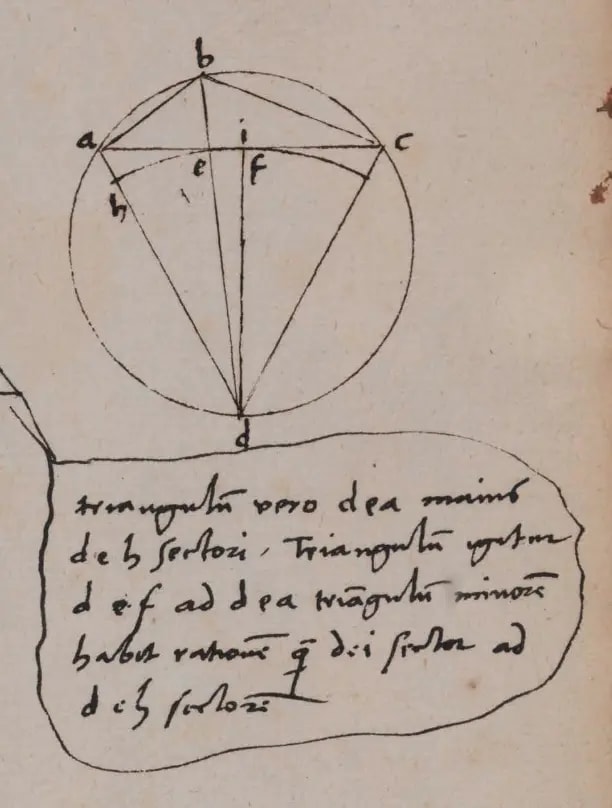
Copernicus, however, was dissatisfied with the complexity of the Ptolemaic geocentric system, which required the use of epicycles (additional circles) to explain the observed motions of planets. He started to explore alternative models, and through careful observations of the heavens and mathematical calculations, he formulated a heliocentric model.
In Copernicus's heliocentric model, the Sun was at the center, and the Earth and other planets orbited around it. This model provided a more elegant and simpler explanation for the movements of celestial bodies. Copernicus outlined his heliocentric theory in his seminal work "De revolutionibus orbium coelestium," published in 1543. While his heliocentric model was not immediately embraced, it laid the groundwork for the scientific revolution and the eventual shift in our understanding of the solar system.

De Revolutionibus Orbium Coelestium, Basel, Henricus Petreius, 1566 (Second edition).
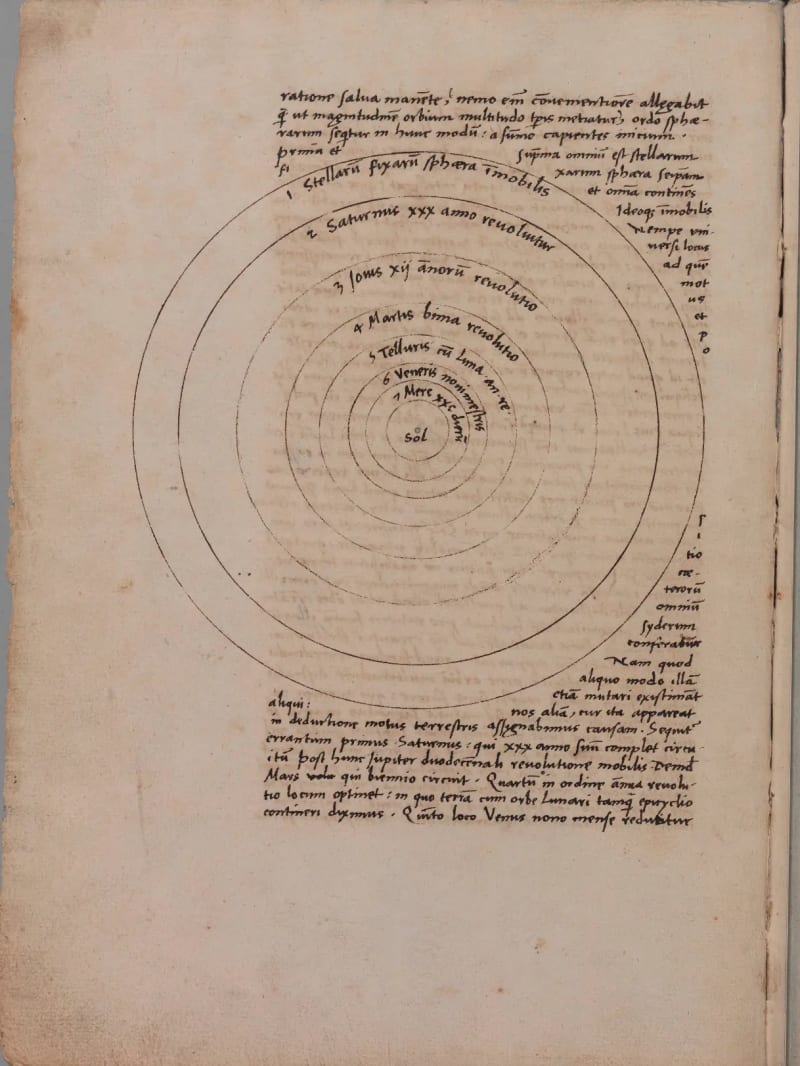


Throughout history, various publications of the treatise have emerged, and each edition added details or modifications to the illustration of the celestial orbits. In the figure, from left to right, we see:
- The handwritten original De revolutionibus libri sex by Mikołaj Kopernik (Nicolaus Copernicus) on display at Jagellonian Library in Kraków, dated 1520-1541.
- First publication of the De revolutionibus orbium coelestium, published in Nürnberg by Johann Petreius just before Copernicus' death, occurred in 1543.
- De revolutionibus orbium coelestium, published in Amsterdam by Willem Jansz Blaeu in 1617..
Nicolaus Copernicus
1473 – 1543
Nicolaus Copernicus, born on February 19, 1473, in Toruń, Poland, led a multifaceted life that spanned various roles, including astronomer, mathematician, physician, and clergyman. In the early 16th century, Copernicus embarked on a journey to Italy to pursue advanced studies, attending the University of Bologna and later the University of Padua. During this period, he immersed himself in various subjects, including astronomy, mathematics, and medicine.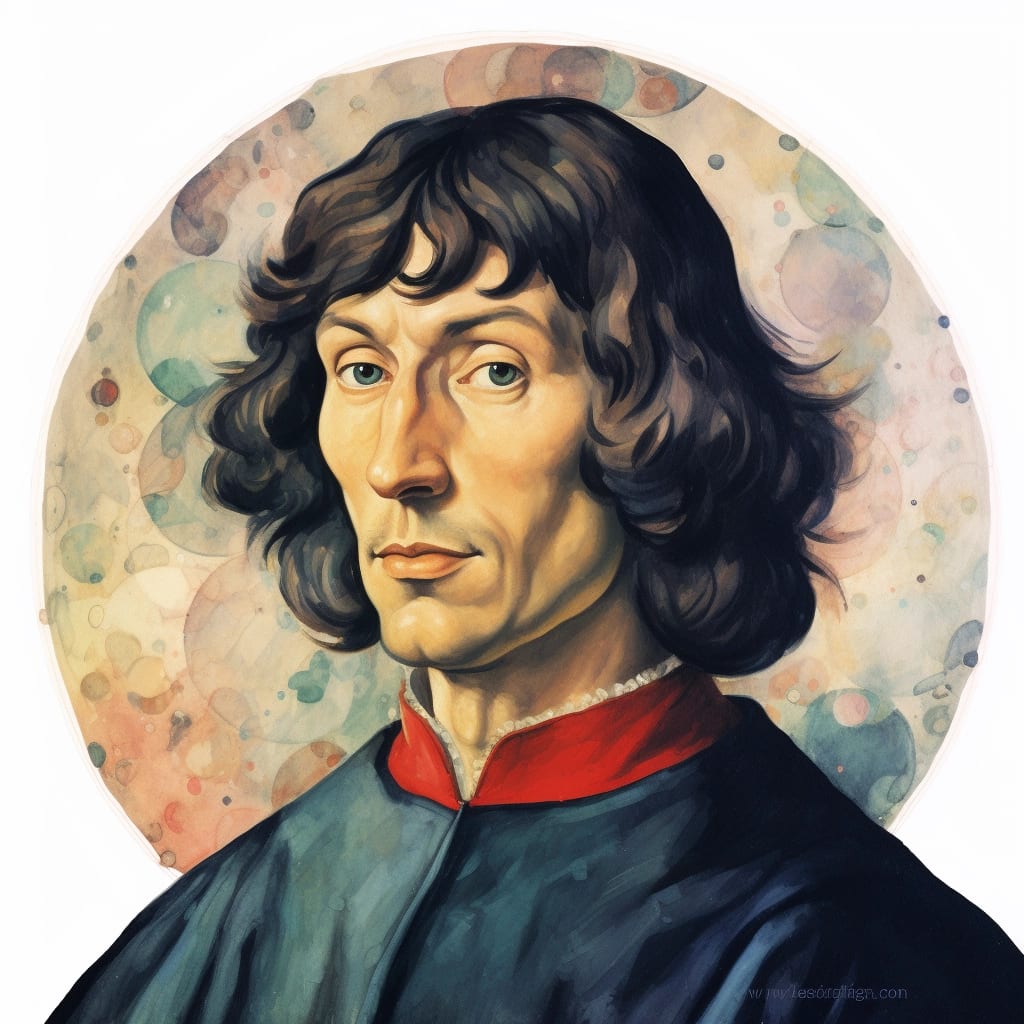
In Italy, Copernicus had access to the works of ancient astronomers and mathematicians, such as Ptolemy and Euclid. He also engaged with Renaissance thinkers who were challenging traditional views and encouraging a more critical approach to knowledge.
Exposed to Pythagorean and Platonic philosophies, Copernicus likely drew inspiration from these ideas, particularly the harmony and order attributed to celestial bodies. This philosophical influence may have played a role in shaping his thinking and approach to understanding the cosmos.
